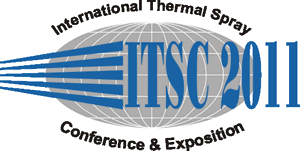
|
2596 |
|
Deposition of oxide ceramics in atmosphere and at room temperature by powder jet deposition technique |
|
Kazuhiro Ogawa* / Fracture and Reliability Research Institute, Tohoku University, Japan Hiroshi Arata / Tohoku University, Japan Masao Takegoshi/ Japan Aerospace Exploration Agency, Japan Fumiei Ono/ Japan Aerospace Exploration Agency, Japan Toshihito Saito/ Japan Aerospace Exploration Agency, Japan |
|
Ceramic coatings are very important technique for wear and corrosion/oxidation resistant structures. In this study, Powder Jet Deposition (PJD) technique was applied to the formation of a ceramics. The PJD technique is quite similar to cold spray, but the PJD can form ceramic coatings in atmosphere and at room temperature. Therefore, it is possible to apply the PJD to the creating and repairing ceramic coatings for large and complex structures on-site. The purpose of this study is to optimize of the spray condition of aluminum titanate coating on varied substrates by the PJD technique and to clarify mechanism of deposition of ceramics. In the case of cold spray, high particle velocity is requisite spray condition, due to need large scale plastic deformation of particles for deposition. Therefore, the particle velocity is the most important factor. And in the case of the higher particle velocity, deposition efficiency of the cold spraying can increased. However, in the case of oxide ceramics, lower particle velocity was better for the deposition in this study. The optimized spraying pressure, which can obtain the thickest coating, is approximately 0.05MPa. The particle velocity was measured in approximately 90m/s by high-speed camera. In the case of higher pressure, the coating and substrate can be eroded. Therefore, it was impossible to grow the coating. It is whole new knowledge that the low velocity within narrow range is required to form a coating of ceramics. |